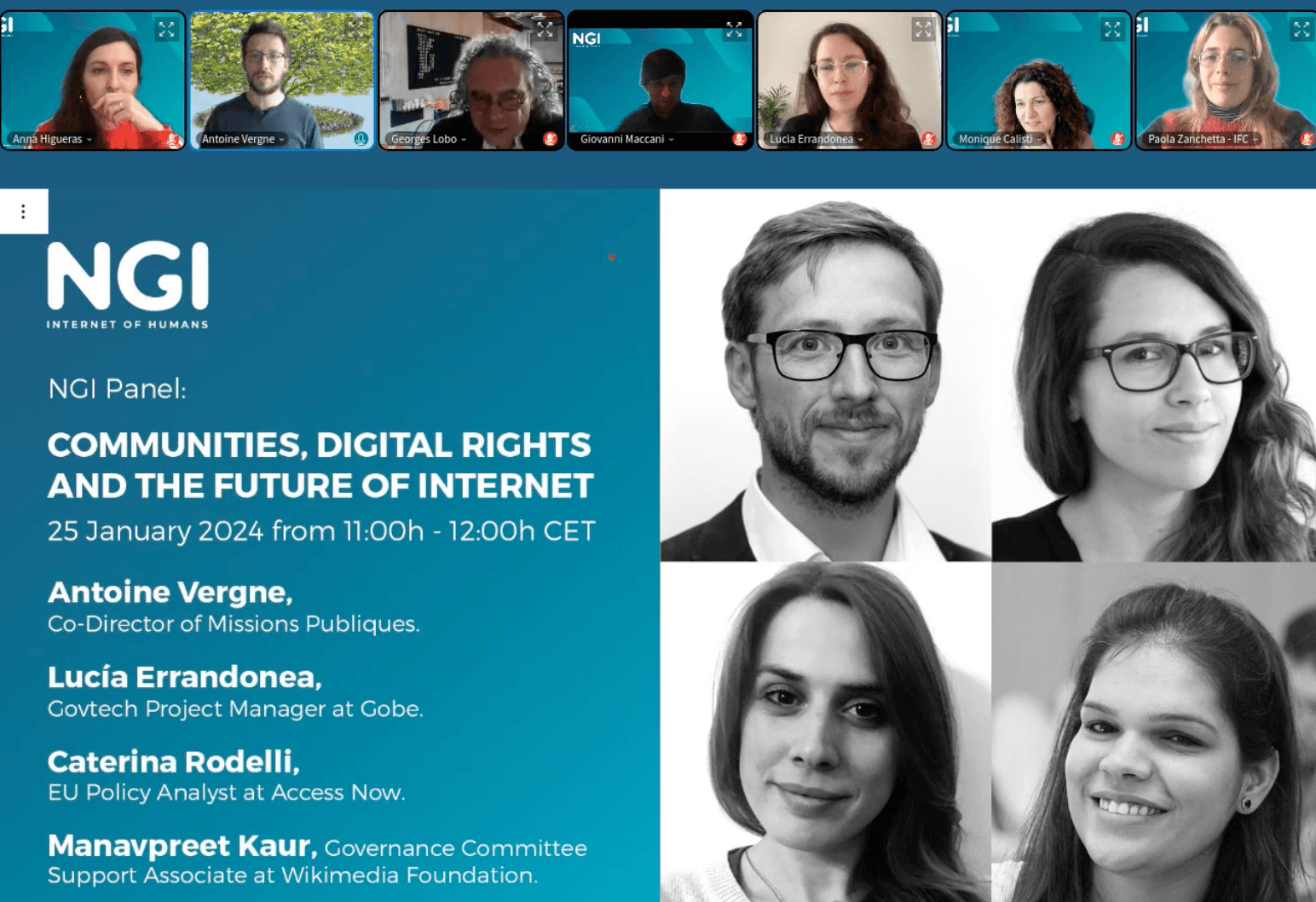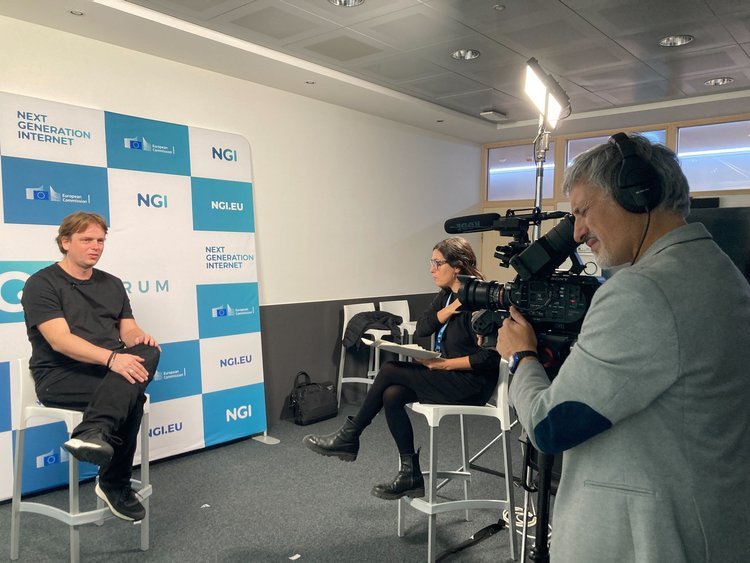Scientific research
Scientific research
ETAIN: Citizen science for electromagnetic exposure
ETAIN: Citizen science for electromagnetic exposure
2 de noviembre de 2022


By the editorial team. (Original publication in English)
How will we benefit from 5G? We are connected through phones, tablets, computers, and other mobile devices 24 hours a day. In this context, the fifth generation of wireless communications (5G) is in the spotlight. What are its benefits? What do we know about its drawbacks? Does it affect our health and the planet?

To address these knowledge gaps, the ETAIN project was created. Funded by the European Commission (GA No 101057216), the ETAIN project aims to develop and validate approaches to assess the impact of emerging technology from a planetary perspective while exploring options for reducing exposure and engaging with citizens and stakeholders about exposure levels and potential associated risks. Following a citizen science paradigm, we will develop an application capable of quantifying personal exposure to RF-EMF (radio frequency electromagnetic fields).
Experimental studies to investigate exposure to 5G

The project will undertake a series of studies to investigate the impact on pollinators—mainly social and solitary bees—and on other insects, humans, and the planet. ETAIN will study biodiversity, development, and fitness of insects while exposed to RF-EMF. This will allow us to define four parameters: welfare, health, behaviour, and productivity of pollinators under exposure to RF-EMF (from 3G to 5G).
Additionally, potential effects on insect biodiversity in relation to this exposure will be investigated through field sampling studies using insect traps in locations with different exposure levels. All this work will be supported by new digital models of insects, which will be used to simulate exposure and its resulting dose. Regarding human health, special attention will be paid to the short- and long-term effects of exposure to 5G electromagnetic fields on human skin and the eye, as these organs are becoming particularly relevant biological targets. The project will explore the production of reactive oxygen species, inflammation, and changes in global gene expression.
Communities at the heart of the ETAIN project
Citizen science is another key piece of ETAIN. Through the co-creation of a specific application and portal, citizens will be able to monitor the relevant parameters of their mobile phone and other device usage. Moreover, this application will be built with citizens from the ground up, which will be an opportunity for them to learn about the project, its objectives, and the technology being studied, and to share their opinions, suggestions, and ideas for improving the application.
The citizen participation strategy will be conducted around different participation centers called Citizen Science Laboratories, which will be based on co-design and user research methods and will create a space for researchers to collaborate with citizens and participants. Initially, two laboratories will be established: one in Spain (Catalonia) focused on co-designing the application, and another in the Netherlands for the portal.
Partners from across Europe with a common goal
ETAIN, coordinated by Utrecht University, and involving Swiss TPH, Ghent University, Ideas for Change, Fields at Work, Eindhoven University of Technology, the Geoponiko Panepistimio Athinon, (Agricultural University of Athens, the Centre National de la Recherche Scientifique, the Technologiko Panepistimio of Kyprou, Games for Health, Ellinikos Georgikos Organismos Dimitra, and the Université de Montpellier, anticipates three broader impacts:
Social impact: Citizens will be empowered to better understand RF-EMF in search of a healthier living and working environment by becoming aware of the direct and indirect effects of 5G exposure.
Scientific impact: With new scientific evidence on the effects of 5G on human health, the ecosystem, and the planet, ETAIN will directly address key scientific issues related to the direct and indirect effects of RF-EMF on health that will inform policies and regulations.
Economic/technological impact: Exposure maps, exposure reduction techniques, and exposure-aware network planning tools will help mobile network operators and European 5G designers and optimizers balance the need for low exposure to 5G with the increasing demand for data resulting from a growing number of users and devices connected to the Internet.
In general, ETAIN will enhance citizens' understanding and capacity for action regarding wireless communication, 5G, and its potential effects on human health, the ecosystem, and the planet. Stay tuned and complete this survey to get in touch with the project.
By the editorial team. (Original publication in English)
How will we benefit from 5G? We are connected through phones, tablets, computers, and other mobile devices 24 hours a day. In this context, the fifth generation of wireless communications (5G) is in the spotlight. What are its benefits? What do we know about its drawbacks? Does it affect our health and the planet?

To address these knowledge gaps, the ETAIN project was created. Funded by the European Commission (GA No 101057216), the ETAIN project aims to develop and validate approaches to assess the impact of emerging technology from a planetary perspective while exploring options for reducing exposure and engaging with citizens and stakeholders about exposure levels and potential associated risks. Following a citizen science paradigm, we will develop an application capable of quantifying personal exposure to RF-EMF (radio frequency electromagnetic fields).
Experimental studies to investigate exposure to 5G

The project will undertake a series of studies to investigate the impact on pollinators—mainly social and solitary bees—and on other insects, humans, and the planet. ETAIN will study biodiversity, development, and fitness of insects while exposed to RF-EMF. This will allow us to define four parameters: welfare, health, behaviour, and productivity of pollinators under exposure to RF-EMF (from 3G to 5G).
Additionally, potential effects on insect biodiversity in relation to this exposure will be investigated through field sampling studies using insect traps in locations with different exposure levels. All this work will be supported by new digital models of insects, which will be used to simulate exposure and its resulting dose. Regarding human health, special attention will be paid to the short- and long-term effects of exposure to 5G electromagnetic fields on human skin and the eye, as these organs are becoming particularly relevant biological targets. The project will explore the production of reactive oxygen species, inflammation, and changes in global gene expression.
Communities at the heart of the ETAIN project
Citizen science is another key piece of ETAIN. Through the co-creation of a specific application and portal, citizens will be able to monitor the relevant parameters of their mobile phone and other device usage. Moreover, this application will be built with citizens from the ground up, which will be an opportunity for them to learn about the project, its objectives, and the technology being studied, and to share their opinions, suggestions, and ideas for improving the application.
The citizen participation strategy will be conducted around different participation centers called Citizen Science Laboratories, which will be based on co-design and user research methods and will create a space for researchers to collaborate with citizens and participants. Initially, two laboratories will be established: one in Spain (Catalonia) focused on co-designing the application, and another in the Netherlands for the portal.
Partners from across Europe with a common goal
ETAIN, coordinated by Utrecht University, and involving Swiss TPH, Ghent University, Ideas for Change, Fields at Work, Eindhoven University of Technology, the Geoponiko Panepistimio Athinon, (Agricultural University of Athens, the Centre National de la Recherche Scientifique, the Technologiko Panepistimio of Kyprou, Games for Health, Ellinikos Georgikos Organismos Dimitra, and the Université de Montpellier, anticipates three broader impacts:
Social impact: Citizens will be empowered to better understand RF-EMF in search of a healthier living and working environment by becoming aware of the direct and indirect effects of 5G exposure.
Scientific impact: With new scientific evidence on the effects of 5G on human health, the ecosystem, and the planet, ETAIN will directly address key scientific issues related to the direct and indirect effects of RF-EMF on health that will inform policies and regulations.
Economic/technological impact: Exposure maps, exposure reduction techniques, and exposure-aware network planning tools will help mobile network operators and European 5G designers and optimizers balance the need for low exposure to 5G with the increasing demand for data resulting from a growing number of users and devices connected to the Internet.
In general, ETAIN will enhance citizens' understanding and capacity for action regarding wireless communication, 5G, and its potential effects on human health, the ecosystem, and the planet. Stay tuned and complete this survey to get in touch with the project.


